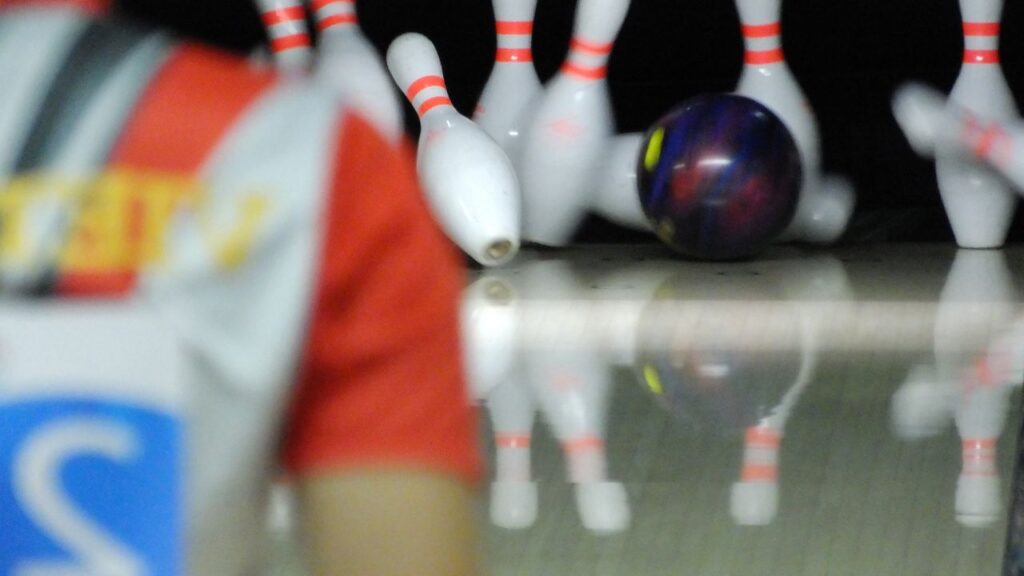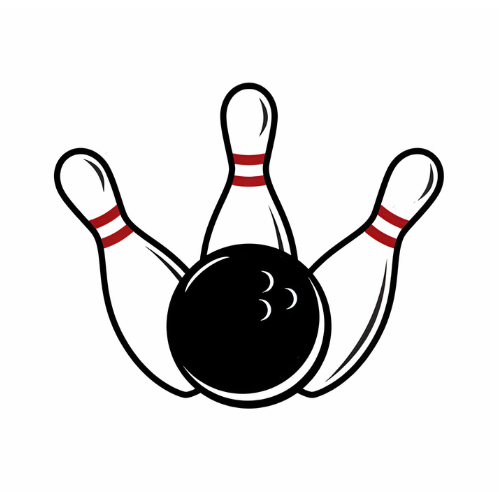To drill a bowling ball at home, you need a ball jig and a drill press. Using the ball jig, secure the ball in place, select the desired drilling layout, and mark the spots for drilling.
With the drill press, set the proper speed and drill using a specialized bowling ball drill bit, taking care to remove debris regularly. Be mindful of safety precautions and consult professional instructions or videos for further guidance.
Drilling a bowling ball at home requires specialized equipment and knowledge, which should only be attempted by experienced individuals or under professional supervision. Failure to adhere to proper techniques may damage the bowling ball or injury.

Understanding the Basics of Bowling Ball Drilling
Drilling a bowling ball is a crucial process that greatly affects its performance on the lanes. When a bowling ball is drilled, it is tailored to match the bowler’s hand size, style, and desired ball reaction. This personalized drilling allows for better control, increased accuracy, and improved overall performance.
Impact of Drilling on Ball Motion
Drilling a bowling ball alters its weight block dynamics and balance, which directly influences its motion on the lane. By strategically placing finger and thumb holes, the weight distribution is modified, affecting the ball’s roll, hook potential, and overall performance. Proper drilling can optimize a bowler’s release, providing the ideal combination of power and accuracy.
Types of Bowling Ball Grips and Layouts
Bowling ball grips and layouts are designed to accommodate different bowlers’ preferences and playing styles. The two main grip styles are conventional and fingertip grips. Conventional grips involve inserting fingers up to the second knuckle, providing a secure and stable feel.
Fingertip grips, on the other hand, involve inserting fingers only into the first knuckle, allowing for increased revolutions and enhanced hook potential. Layouts refer to the positioning and orientation of the finger and thumb holes on the ball’s surface.
Layouts can significantly influence ball motion, controlling factors such as length, backend reaction, and total hook. Popular layouts include pin-up, pin-down, and dual-angle layouts, each offering distinct ball reactions.
Gathering the Necessary Tools and Equipment
Before you start drilling a bowling ball at home, it’s essential to gather all the necessary tools and equipment. Having the right tools not only ensures a smooth drilling process but also enhances accuracy and precision.
Here, we will outline the essential tools needed for drilling a bowling ball at home, along with a detailed description of each tool and its function. Additionally, we will recommend additional equipment that can further improve your drilling experience.
Tools for Drilling a Bowling Ball
Bowling Ball Drilling Jig: A drilling jig is a crucial tool that securely holds the bowling ball in place during the drilling process. It provides stability and helps maintain the desired hole positions. Jigs come in various designs, including bench-mounted and floor-standing options. Choose a drilling jig that suits your needs and provides the necessary stability for accurate drilling.
Drill Press: A drill press is used to drill the holes in the bowling ball. It allows for precise drilling by providing a stable platform and consistent drilling depth. Make sure to use a drill press with adjustable speed settings to accommodate different drilling requirements.
Drill Bits: Drill bits specifically designed for bowling ball drilling are essential for achieving clean and accurate holes. Two types of drill bits are commonly used: a 1 ¼” Forstner bit for finger holes and a 1 ⅜” Forstner bit for the thumb hole. These bits are carbide-tipped and designed to cut through the bowling ball material efficiently.
Measuring Tools: Accurate measurements are crucial for proper hole placement. Use measuring tools such as calipers or a tape measure to mark the desired hole positions accurately. This ensures consistency and symmetry in hole placement, leading to a well-balanced ball.
Masking Tape and Marker: Masking tape is used to mark the hole positions on the surface of the bowling ball. It helps guide the drilling process and prevents the drill bit from slipping. A marker can be used to trace the tape outlines for easy visibility during drilling.
Preparing the Bowling Ball for Drilling
Proper preparation of the bowling ball is crucial before drilling to ensure accurate hole placement and maintain the ball’s structural integrity. Now we will discuss the importance of cleaning and inspecting the ball before drilling, and provide step-by-step instructions on cleaning the ball surface.
Cleaning the Bowling Ball Surface
Start by removing any dirt, oil, or lane residue from the ball surface. Use a specially formulated bowling ball cleaner or mild dish soap mixed with warm water.
Wet a clean cloth or sponge with the cleaning solution and gently wipe the entire surface of the ball. Pay extra attention to areas with visible dirt or oil buildup.
Rinse the ball thoroughly with clean water to remove any remaining cleaning solution. Ensure that all traces of soap or cleaner are removed.
Dry the ball with a clean towel or allow it to air dry completely before proceeding to the next step. Make sure the ball is completely dry to avoid any slipping during the drilling process.
Inspecting the Bowling Ball
Carefully examine the ball surface for any visible damage, cracks, or irregularities. If you notice any significant damage, it is advisable to consult a professional to assess the ball’s structural integrity before drilling.
Check for existing balance holes, if any, on the ball. Note their locations and sizes, as they may need to be plugged or filled during the drilling process.
Determining the Layout and Grip
Determining the layout and grip of your drilled bowling ball is a crucial step in customizing it to suit your style and achieve the desired ball motion. In this section, we will explore different bowling ball layouts, and discuss the importance of choosing the right grip.
Different Bowling Ball Layouts
Pin-Up Layout: This layout positions the pin (the top marking on the ball) above the finger holes. It creates a longer skid phase and a sharper hook at the backend, providing more length and a strong backend reaction. It is suitable for bowlers looking for a more angular ball motion.
Pin-Down Layout: In a pin-down layout, the pin is located below the finger holes. This layout promotes an earlier roll and a smoother, controlled hook. It is ideal for bowlers who prefer a smoother transition and increased mid-lane traction.
Dual-Angle Layout: The dual-angle layout combines both the pin-up and pin-down layouts by adjusting the angles of the pin and the VAL (Vertical Axis Line). This layout allows for fine-tuning the ball motion and can be customized to match specific lane conditions and playing styles.
Choosing the Right Grip
Conventional Grip: A conventional grip involves inserting the fingers up to the second knuckle. It provides a secure and stable feel, making it a popular choice for beginners and bowlers who prefer a more controlled release. This grip style is known for generating fewer revs but offers increased accuracy and consistency.
Fingertip Grip: The fingertip grip involves inserting the fingers only up to the first knuckle. It allows for a more dynamic release, generating increased revs and enhanced hook potential. This grip is favored by experienced bowlers looking for maximum power and hook potential.
Drilling Techniques for Different Hole Positions
Drilling the finger holes and thumb holes in a bowling ball requires precision and careful execution. Here we will provide step-by-step instructions for drilling finger holes and the thumb hole, along with recommended angles and depths for optimal results.
Drilling Finger Holes
Secure the bowling ball in the drilling jig, ensuring it is positioned correctly according to the marked hole positions.
Begin with the first finger hole. Use the appropriate drill bit (1 ¼” Forstner bit) and set the drill press to the desired drilling angle, typically between 3 and 15 degrees. Lower the drill bit slowly and steadily into the ball, applying moderate pressure. Start drilling and maintain a consistent speed throughout the process. Take care not to force the drill bit or rush the drilling.
Drill the first finger hole to the desired depth, typically around 1 ⅜” to 1 ½”. Monitor the drilling progress and periodically retract the drill bit to remove any accumulated debris. Repeat the same process for the second finger hole, ensuring consistency in drilling angle and depth. Take your time and maintain focus to achieve accurate and symmetrical results.
Drilling the Thumb Hole
After drilling the finger holes, reposition the ball in the drilling jig to align it for drilling the thumb hole. Use the appropriate drill bit (1 ⅜” Forstner bit). Set the drill press to the desired drilling angle for the thumb hole, which is typically between 0 and 10 degrees. Ensure the angle complements your preferred release style and desired ball motion.
Lower the drill bit gradually into the ball, applying steady pressure. Begin drilling the thumb hole and maintain a consistent speed, avoiding any abrupt movements or excessive force. Drill the thumb hole to the desired depth, typically around 1 ⅜” to 1 ½”. Pay attention to maintaining symmetry with the finger holes and ensure a comfortable fit for your thumb.
Recommended Angles and Depths
Finger Hole Angles: The drilling angles for finger holes typically range between 3 and 15 degrees. The specific angle depends on factors such as your release style, the ball motion desired, and the layout chosen. Experimentation and consultation with a professional can help determine the optimal angle for your game.
Thumb Hole Angle: The drilling angle for the thumb hole is usually between 0 and 10 degrees. It is essential to align the thumb hole angle with your preferred release technique and the overall ball motion you aim to achieve.
Hole Depths: The standard depths for finger holes and the thumb hole are typically around 1 ⅜” to 1 ½”. However, these measurements can be adjusted based on factors such as your hand size, flexibility, and comfort level.
Remember, drilling the holes accurately and symmetrically is crucial for achieving the desired ball motion and a comfortable fit. If you are uncertain or lack experience, it is recommended to seek professional assistance or consult with a knowledgeable bowler.
FAQs
How long does it take to drill a bowling ball at home?
The time required to drill a bowling ball at home can vary depending on factors such as your experience level, the complexity of the layout, and the availability of the necessary tools. On average, it can take approximately 30 minutes to an hour to complete the drilling process for a single ball.
Can I drill a bowling ball without professional experience?
While it is possible to drill a bowling ball at home without professional experience, it is recommended to seek guidance from an experienced bowler or consult a pro shop professional. They can provide valuable insights, ensure proper hole placement, and offer advice on selecting the right layout and grip for your game.
What happens if I make a mistake while drilling?
If you make a mistake while drilling, it is best to stop immediately and assess the situation. Depending on the severity of the mistake, you may need to consult a professional to determine the best course of action. Attempting to correct the mistake yourself may lead to further damage or compromise the ball’s performance.
Conclusion
Drilling a bowling ball at home can be a rewarding and personalized experience that enhances your performance on the lanes. By understanding the basics of drilling, gathering the necessary tools, and following the step-by-step instructions provided in this guide, you can successfully drill a bowling ball to match your style and preferences.
Remember to prioritize safety, maintain accuracy throughout the drilling process, and test and adjust the drilled ball to achieve optimal results. Regular maintenance, including cleaning and polishing, will help prolong the life and performance of your drilled ball.
Enjoy the benefits of a custom-drilled bowling ball and watch as your game improves with a personalized touch!
